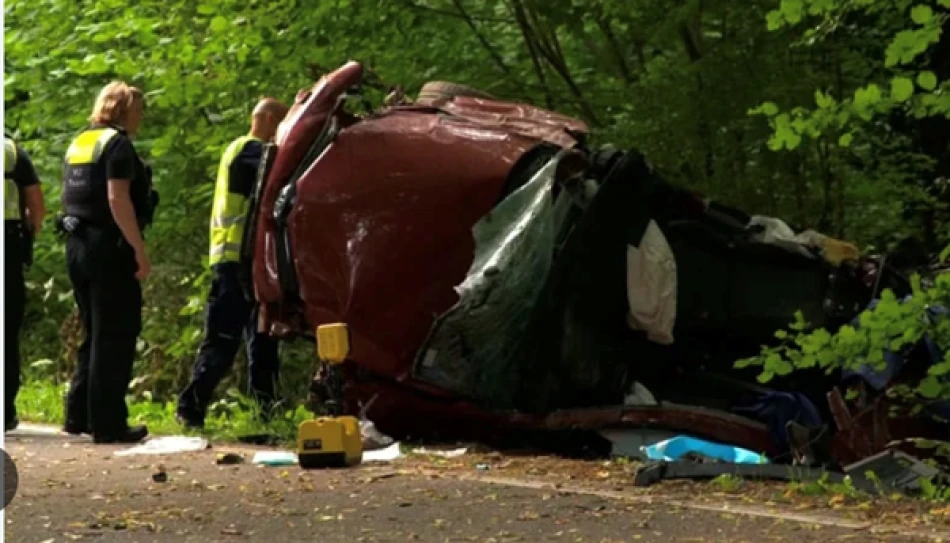
Deadly Crash Claims 4 Lives on German Roads
Fatal Crash Near German City Highlights Rural Road Safety Concerns
A devastating single-vehicle accident near Kassel, Germany, claimed four lives early Friday morning when a car veered off a regional road and struck multiple trees. The tragedy underscores ongoing safety challenges on Germany's extensive network of rural and regional roads, where nearly 40% of the country's traffic fatalities occur despite representing just a fraction of total traffic volume.
The Deadly Sequence of Events
Police reports indicate the vehicle was traveling on a regional road toward the town of Reinhardshagen shortly after midnight Thursday when it inexplicably left the roadway during a left-hand curve. The car subsequently crashed into several trees in a forested area, killing all four occupants instantly—a 32-year-old driver and three passengers—despite emergency response efforts.
The cause of the deviation remains under investigation, with accident reconstruction experts now tasked with piecing together the final moments before impact.
Germany's Rural Road Safety Challenge
This incident reflects a broader pattern across Germany's road network. Regional and rural roads, known locally as Landstraßen, consistently account for a disproportionate number of serious accidents relative to their traffic density. These roads often feature sharp curves, limited lighting, and trees positioned close to the roadway—a combination that can prove deadly when drivers lose control.
Contributing Risk Factors
Several elements commonly contribute to such accidents on German regional roads. Nighttime driving significantly increases risk, particularly on unfamiliar routes where drivers may misjudge curve severity or road conditions. The proximity of mature trees to roadways, while aesthetically pleasing, creates unforgiving crash scenarios where vehicles have little room for error or recovery.
Speed management also plays a critical role. Unlike Germany's famous autobahns with their unrestricted sections, regional roads typically enforce speed limits, but enforcement can be sporadic on remote stretches.
Broader Safety Implications
German transportation authorities have long grappled with balancing road safety improvements against environmental and cultural preservation concerns. Widening roads or removing roadside trees often faces opposition from environmental groups and local communities who value the traditional character of rural landscapes.
The investigation's findings may influence ongoing debates about infrastructure modifications, particularly regarding guardrail installation and roadside hazard management in forested areas. Such measures have proven effective in reducing fatality rates on similar roads in other European countries, though implementation remains politically and financially challenging.
As reconstruction experts work to determine what caused this particular vehicle to leave the roadway, the incident serves as a stark reminder of how quickly routine nighttime travel can turn tragic on Germany's scenic but potentially dangerous regional road network.
 Layla Al Mansoori
Layla Al Mansoori







